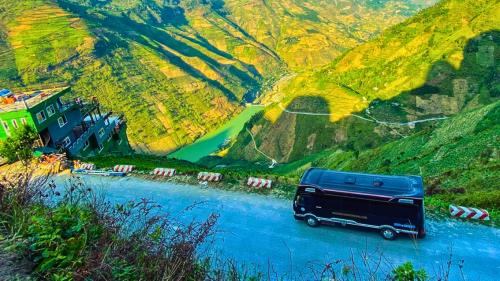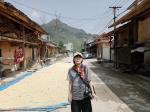The Ha Giang - Cao Bang Loop Map is a breathtaking journey through Vietnam’s northernmost regions. It is renowned for its dramatic landscapes, rich cultural heritage, and delicious local cuisine. This loop offers travelers the chance to explore iconic landmarks, picturesque villages, and vibrant markets while immersing themselves in the unique cultures of the ethnic minority groups. Whether you’re a seasoned adventurer or a first-time explorer, this guide will help you plan the perfect trip.
Recommended Tours for You:
Best Time to Experience the Ha Giang - Cao Bang Loop Map
The best time to embark on the Ha Giang - Cao Bang Loop is during the dry season, from September to November and March to May. During these months, the weather is pleasant, with clear skies that enhance the beauty of the rugged mountains and lush green valleys.
From September to November, Ha Giang is adorned with golden rice terraces and the vibrant blooms of buckwheat flowers (hoa tam giác mạch), creating a magical atmosphere. Meanwhile, from March to May, the weather is cool and refreshing, making it an ideal time to visit Ban Gioc Waterfall, which is at its fullest and most spectacular during this period.
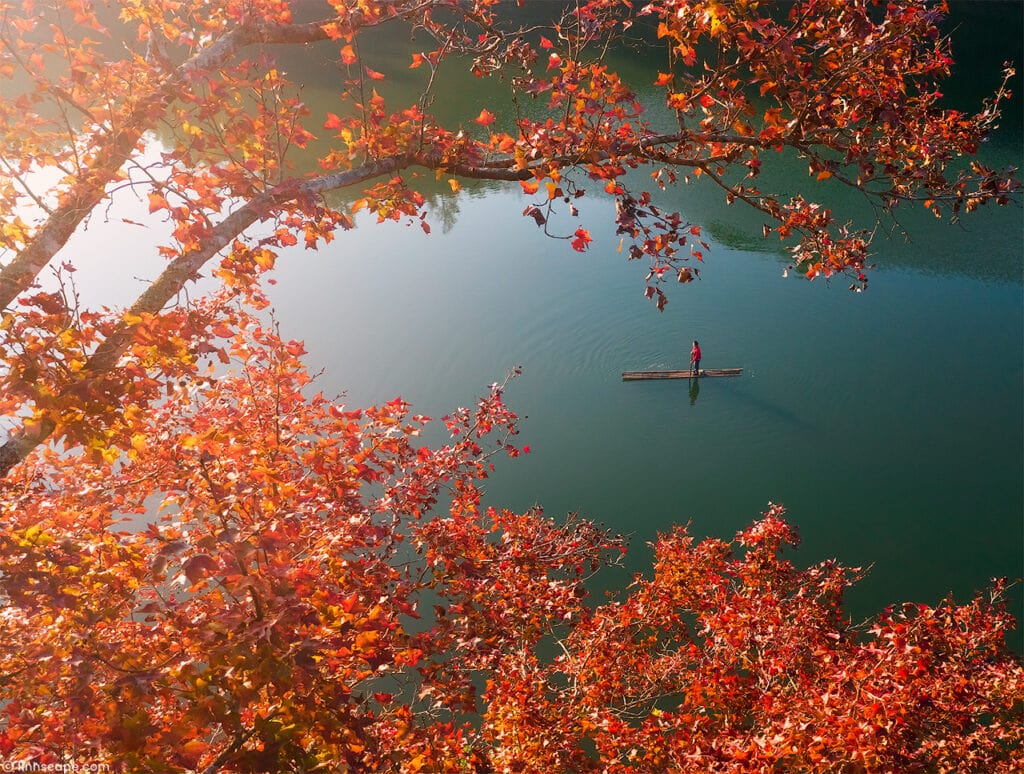
Which Transportation to Choose
Choosing the right transportation is crucial for an enjoyable journey. Travelers can opt for motorbikes, which are ideal for thrill-seekers and those who want to experience the scenic routes firsthand. Motorbikes can be rented in Ha Giang or Cao Bang.
Cars, whether self-driven or with a driver, are suitable for families or groups who prefer comfort while covering long distances. Local buses are a budget-friendly option, although they are less flexible for accessing remote attractions. Motorbikes are recommended for short, adventurous segments, while buses or private cars are better for longer distances between destinations.

Suggested Route for the Ha Giang - Cao Bang Loop Map
Embarking on this loop involves visiting a series of stunning locations. Here’s a suggested route:
Start: Hanoi to Ha Giang
The distance from Hanoi to Ha Giang is approximately 300 kilometers, which takes around six to eight hours to travel. Overnight buses from Hanoi to Ha Giang are convenient and save time. The journey introduces travelers to the lush green scenery of northern Vietnam and sets the tone for the adventure ahead.
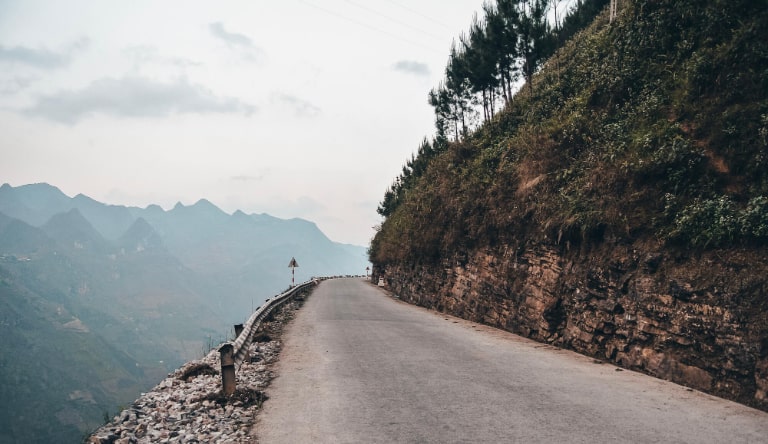
This route is popular among backpackers, and the buses are often comfortable and equipped with reclining seats. For those who prefer driving, a private car ensures flexibility in exploring small towns along the way.
Ha Giang to Quan Ba (Heaven’s Gate)
From Ha Giang to Quan Ba, the distance is about 46 kilometers. The Quan Ba Heaven’s Gate offers panoramic views of the Tam Son Valley and the Twin Mountain, also known as Fairy Bosom, a natural wonder surrounded by terraced fields. The beauty of this site is captivating, especially at sunrise when the valley is blanketed by morning mist.
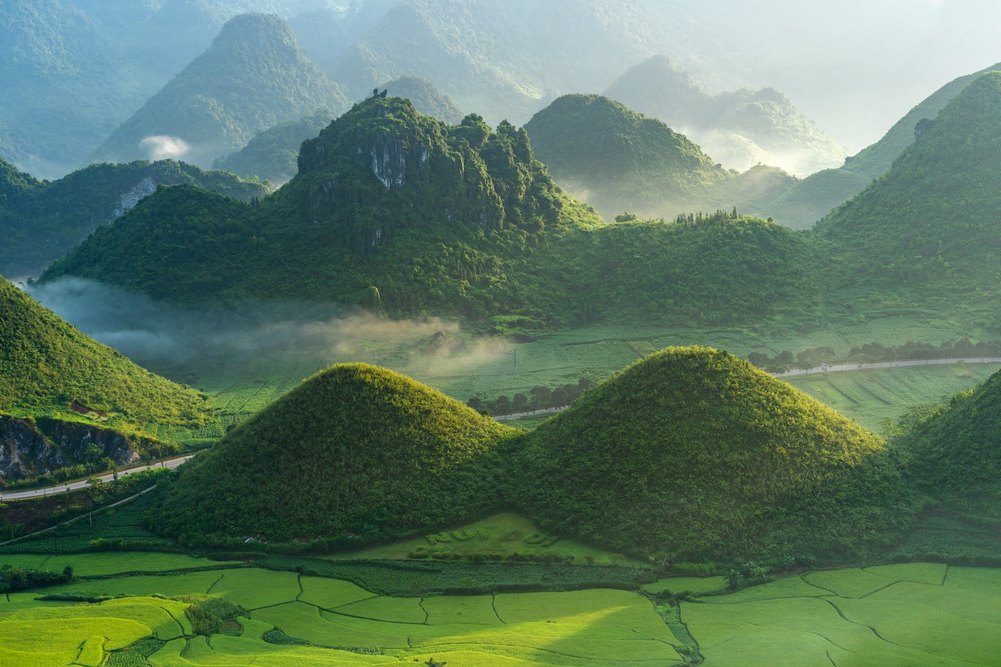
Visitors can explore nearby Hmong villages, where traditional customs and crafts are preserved. One highlight is trying the local specialty, Men Men (steamed cornmeal), a staple in Hmong cuisine. Quan Ba also offers various budget-friendly homestays, providing a cozy place to rest after a day of exploring.
Quan Ba to Yen Minh
The distance from Quan Ba to Yen Minh is around 60 kilometers. The drive is scenic, taking you through pine forests and karst landscapes that evoke a sense of serenity. This stretch is perfect for photographers seeking to capture the untouched beauty of Vietnam’s countryside.
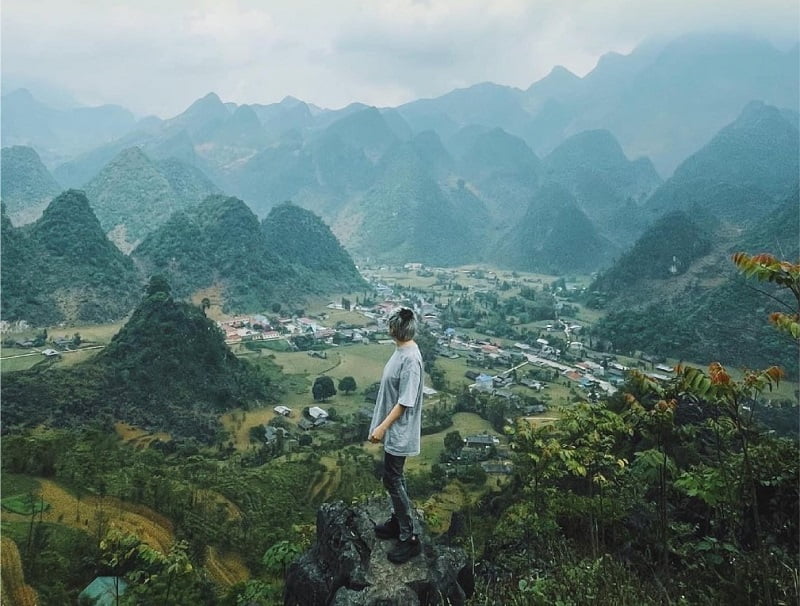
Yen Minh is known for its quiet charm and hearty dishes. Travelers often stop to enjoy black chicken hotpot (Gà đen), a flavorful local delicacy. The town has several comfortable homestays and guesthouses, making it an excellent place to recharge before continuing the journey.
Yen Minh to Dong Van
The distance between Yen Minh and Dong Van is approximately 47 kilometers. Dong Van Karst Plateau, a UNESCO Global Geopark, is a highlight of this area, showcasing dramatic limestone formations and deep valleys. The charming old quarter of Dong Van adds a historical touch, with its well-preserved French colonial buildings.
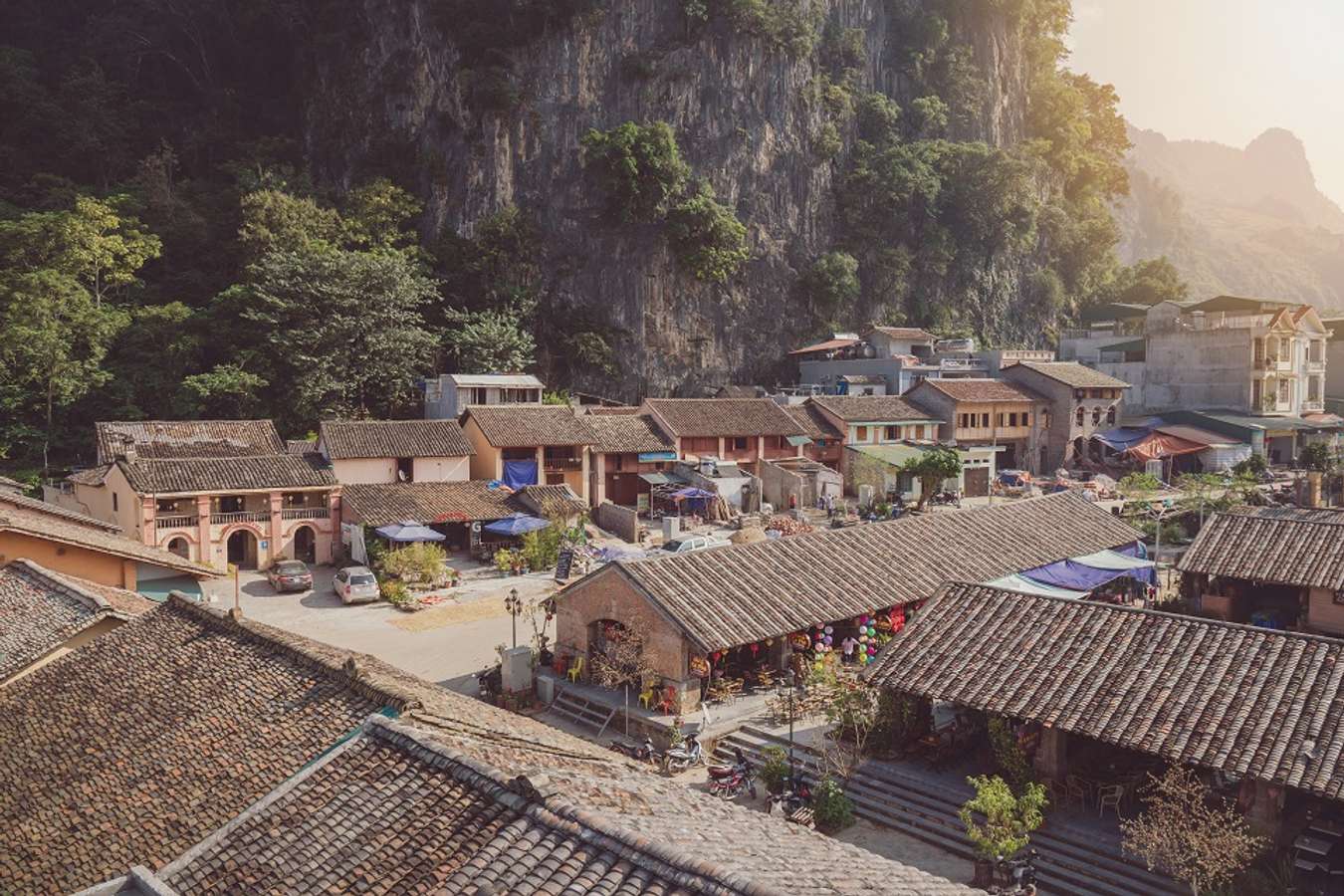
Travelers can explore vibrant local markets that offer handicrafts and traditional textiles. A must-try here is the five-color sticky rice (Xôi ngũ sắc), a visually striking and delicious dish. Dong Van provides cozy homestays and a lively night market, where you can enjoy authentic Vietnamese street food.
Dong Van to Lung Cu (Flag Tower)
Traveling from Dong Van to Lung Cu covers about 24 kilometers. Lung Cu Flag Tower marks the northernmost point of Vietnam, offering a 360-degree view of the surrounding mountains and valleys. This iconic site is a symbol of national pride and a must-visit for any traveler.
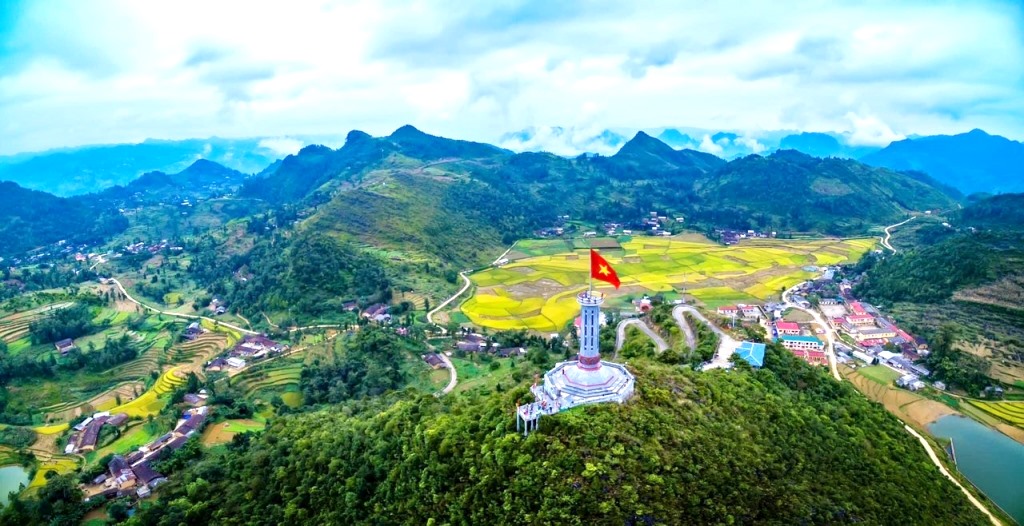
The ethnic minority villages near Lung Cu are a treasure trove of cultural experiences. Visitors can learn about traditional weaving techniques and enjoy locally brewed corn wine. The area is peaceful, making it a great spot for reflection and relaxation.
Lung Cu to Meo Vac
The distance from Lung Cu to Meo Vac is roughly 22 kilometers. This segment features Ma Pi Leng Pass, one of Vietnam’s most dramatic mountain passes. The winding roads offer breathtaking views of the Nho Que River, which meanders through steep cliffs and lush green valleys.
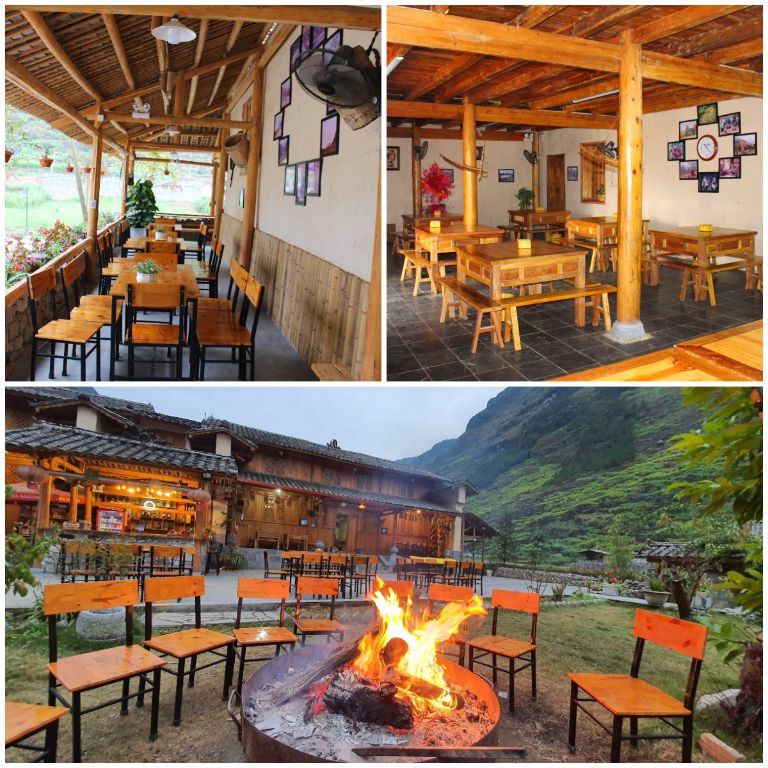
Meo Vac is famous for its vibrant Sunday market, where ethnic minority groups gather to trade goods and socialize. You can indulge in seven-flavored grilled duck (Vịt quay 7 món) while enjoying the lively atmosphere. Affordable accommodations and local eateries make Meo Vac a popular stop for travelers.
Meo Vac to Bao Lac (Entering Cao Bang)
From Meo Vac to Bao Lac, the distance is about 80 kilometers. This part of the journey transitions into Cao Bang, with lush greenery and quieter roads creating a calming ambiance. The area is perfect for those looking to escape the hustle and bustle of urban life.
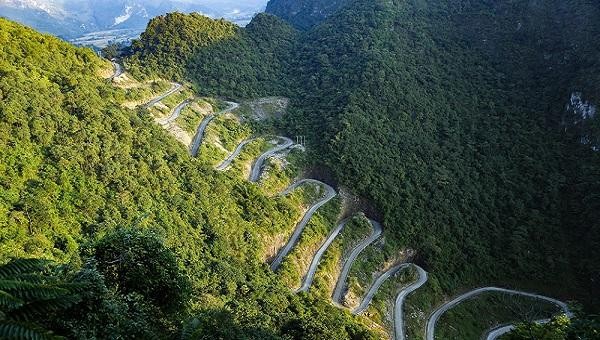
Bao Lac serves as a great base for exploring the surrounding villages, where you can meet the Tay and Nung ethnic groups. Their traditional stilt houses and colorful markets are worth exploring. The town offers a range of guesthouses and small restaurants that serve authentic local dishes.
Bao Lac to Ban Gioc Waterfall
The distance from Bao Lac to Ban Gioc Waterfall is approximately 150 kilometers. Ban Gioc Waterfall is the largest and most beautiful waterfall in Vietnam, located on the border with China. The sight of cascading water surrounded by lush greenery is a highlight of the journey.
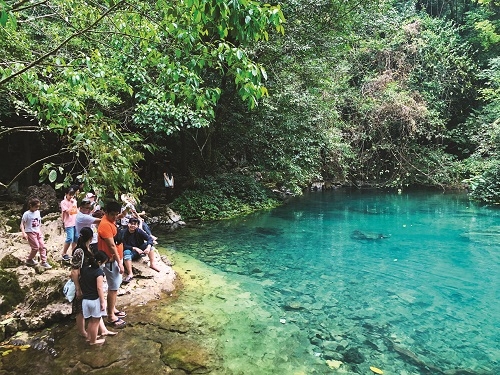
While here, visitors can sample Cốm lam (sticky rice in bamboo), a specialty of the region. Homestays near the waterfall provide a serene environment and spectacular views, making it a perfect place to unwind.
Ban Gioc to Nguom Ngao Cave
From Ban Gioc Waterfall to Nguom Ngao Cave, the distance is just about three kilometers. This natural cave features stunning limestone formations, with its intricate stalactites and stalagmites creating an otherworldly atmosphere.
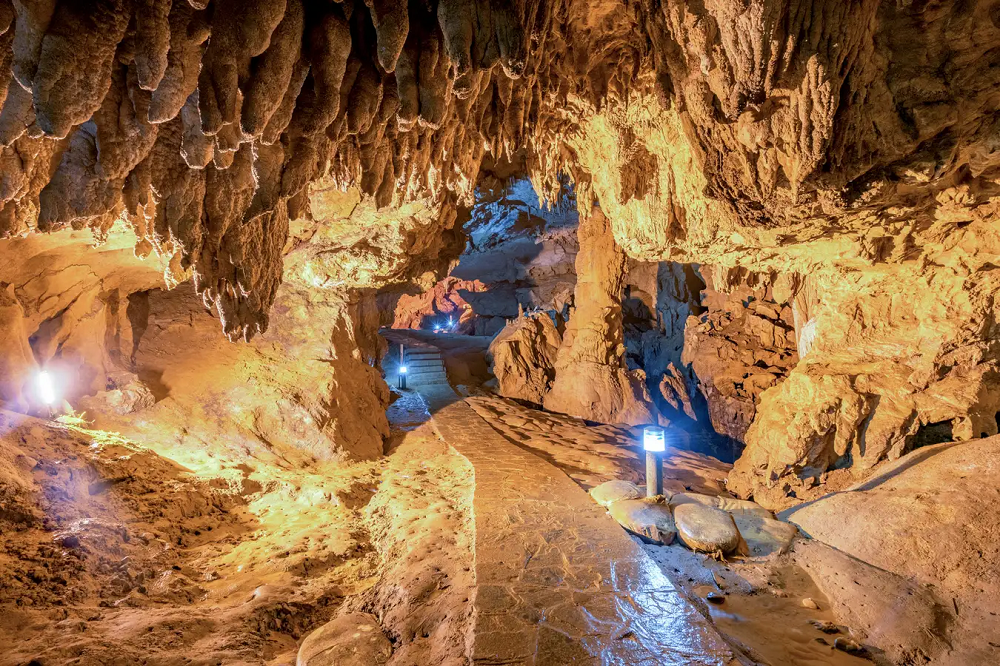
Nguom Ngao is ideal for adventurers and photographers alike. Guided tours are available to help visitors explore its unique geology. The cave is well-lit, ensuring a safe and enjoyable experience for all ages.
Nguom Ngao to Pac Bo (where Uncle Ho Chi Minh lived and worked)
The journey from Nguom Ngao to Pac Bo is around 90 kilometers. Pac Bo is a historical site where Uncle Ho Chi Minh lived and worked, offering insight into Vietnam’s revolutionary history. The site includes a small museum, a restored cave, and a picturesque stream.
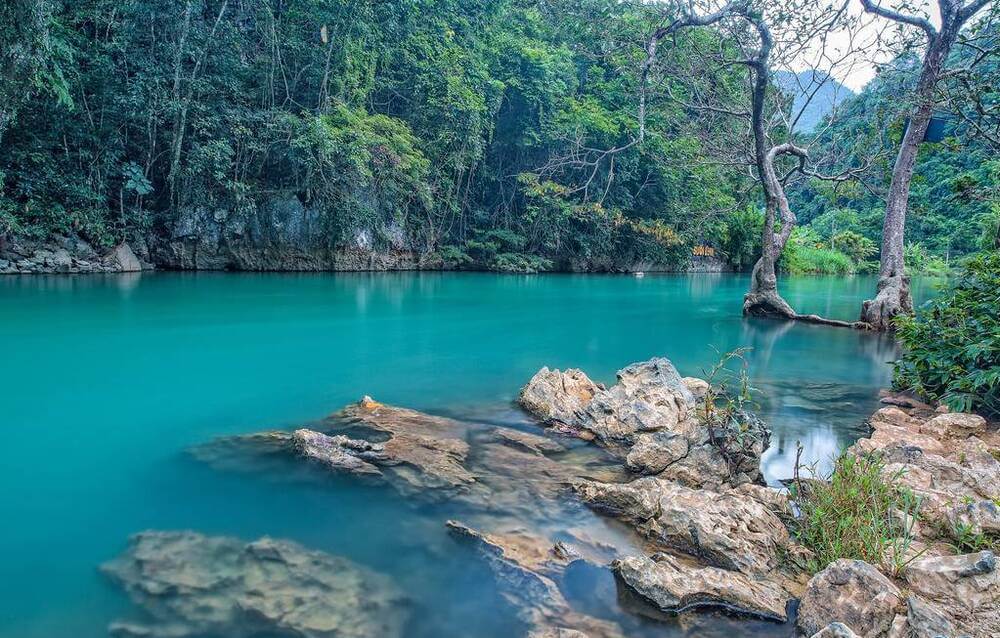
Pac Bo is not only significant for its historical value but also for its natural beauty. Visitors can enjoy peaceful walks along the stream and take in the lush surroundings. This destination is both educational and relaxing, making it a unique stop on the journey.
Pac Bo to Thang Hen Lake
The distance from Pac Bo to Thang Hen Lake is approximately 30 kilometers. Thang Hen Lake is a picturesque, emerald-green lake surrounded by lush forests. The reflections on the calm water create a tranquil and almost magical scene.
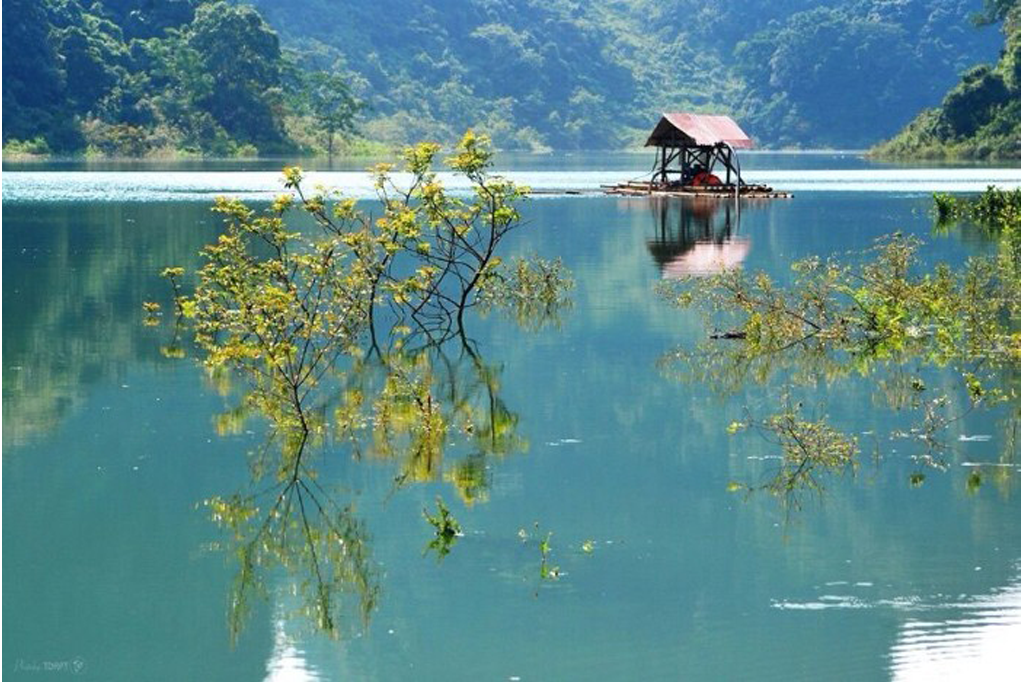
The area offers tranquil homestays where travelers can enjoy local delicacies and unwind in nature’s embrace. It is a perfect spot for those seeking a peaceful retreat.
Cao Bang to Hanoi
The journey from Cao Bang back to Hanoi is around 280 kilometers and takes six to eight hours. Buses from Cao Bang to Hanoi run frequently, making it easy to return. For those driving, the route offers scenic views and opportunities to stop at small towns and villages along the way.
Returning to Hanoi marks the end of an unforgettable adventure through northern Vietnam. Travelers leave with memories of stunning landscapes, cultural encounters, and delicious cuisine.
Conclusion
The Ha Giang - Cao Bang Loop Map is a journey of unparalleled beauty, blending nature, history, and culture. With the suggested route, you can fully immerse yourself in the breathtaking landscapes and unique experiences of northern Vietnam. Whether you’re an adventurer or a cultural enthusiast, this trip promises unforgettable memories. If you want to book a tour in Vietnam, you can contact: +84329196074.



